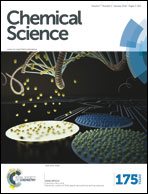Leucine aminopeptidase may contribute to the intrinsic resistance of cancer cells toward cisplatin as revealed by an ultrasensitive fluorescent probe†
Abstract
Cisplatin, a typical anticancer drug, is often used to treat different cancers, and leucine aminopeptidase (LAP) is known to be widely distributed in organisms from bacteria to humans, including various cancer cells. However, cancer cells display different intrinsic or acquired resistance toward cisplatin, and it is unclear whether intracellular LAP plays a role in the intrinsic drug resistance, mainly due to the lack of a sensitive detection approach for LAP because this enzyme usually exists at trace levels in cancer cells. Herein, by developing an ultrasensitive LAP fluorescent probe (detection limit 0.42 ng mL−1) and combining it with confocal fluorescence imaging, we analyze the concentration change of LAP in cancer cells such as HepG2 and A549 cells under cisplatin treatment. We find that a large increase in the LAP concentration occurs in HepG2 rather than in A549 cells. These different changes are further confirmed by an ELISA kit. A cell viability assay reveals that HepG2 cells with a higher level of LAP have much stronger resistance toward cisplatin than A549 cells, suggesting that LAP may serve as a simple indicator to reflect the relative resistance of different cancer cells. Importantly, inhibiting the expression of LAP with siRNA further decreases cell viability. These findings support that LAP may contribute to the intrinsic resistance of cancer cells toward cisplatin. In addition, the proposed probe may find more uses in studying the cellular LAP function, and improving chemotherapeutic cancer treatment.


 Please wait while we load your content...
Please wait while we load your content...